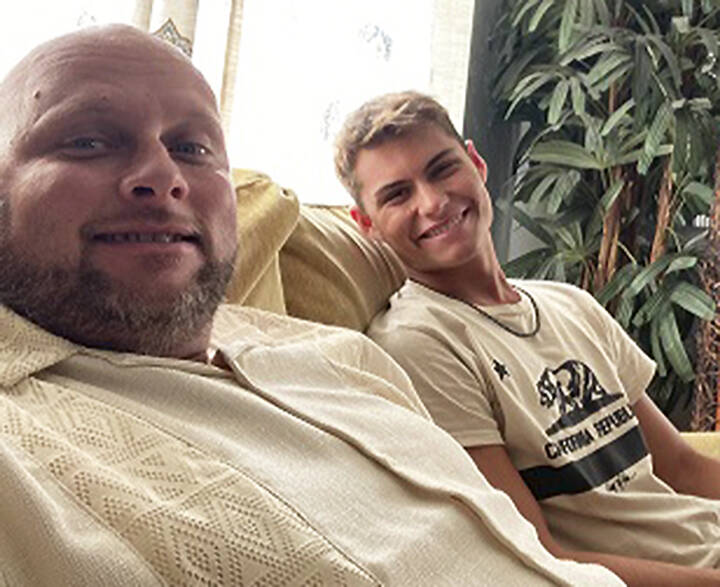Jonathan Lyons never expected to hear the words “breast cancer” from his doctor.
The Kitsap County resident initially dismissed the lump in his left breast as a swollen sweat gland. For months, he ignored it until the lump caused a burning sensation and became infected. After seeking treatment from his doctor, antibiotics cleared the infection, but the lump remained. Lyons was referred for a mammogram at St. Michael Medical Center in Silverdale.
It was there he met Dr. Christina Weed, a board-certified general surgeon specializing in breast surgical oncology with Virginia Mason Franciscan Health. She delivered the unexpected diagnosis—stage 1 breast cancer.
“I was in shock,” Lyons said. “I couldn’t believe it—I’m a guy.”
Lyons is among the fewer than 1% of men diagnosed with breast cancer, according to the Centers for Disease Control and Prevention. Weed said many men don’t realize they can develop breast cancer, which often leads to delayed diagnoses.
“Most men present with a palpable lump near the nipple or areola because that’s where most male breast tissue is located,” Weed said. “It’s rare, but if found early, it’s extremely treatable.”
While genetics can increase risk—such as a BRCA1 or BRCA2 mutation—Lyons’ diagnosis was not linked to family history, despite both parents dying from cancer. Men with those genetic mutations are encouraged to undergo annual breast or chest wall exams and consider mammogram screenings.
For Lyons, the hardest part wasn’t the diagnosis but deciding how to tell his family, particularly his 18-year-old son. Initially, he bottled up his emotions, but with the help of a social worker, he found the courage to open up. “It’s OK to talk to your loved ones,” Lyons said. “You don’t have to bottle it up.”
Lyons underwent a mastectomy followed by 20 radiation treatments. He didn’t need chemotherapy, thanks to the early detection and comprehensive care he received at St. Michael. He said having treatment available close to home made all the difference. “If I had to travel far for care, I probably would have put it off,” Lyons said. “Being able to stay local made it easier to prioritize my health.”
Weed added that treatment for men mirrors that of women, with mastectomy being the most common approach. However, breast conservation methods, such as lumpectomy followed by radiation, are also safe options.
Now in remission, Lyons hopes his story encourages other men to take their health seriously and his voice can be the support needed to break the stigma.
“This journey has been an interesting one, from a personal perspective to meeting and hearing from others,” Lyons shared. “I’ve come to realize more and more that resources are key, and what I’ve discovered is there is a lack of overall resources for men’s health, not just for breast cancer, but across the board.”
Lyons has developed a passion for advocating for better resources for men’s health. “I feel I have a calling to network and somehow bring further attention to how important it is that these resources become more available for the overall health and well-being of men,” he said.
“How I can be a part of contributing or advocating for men’s resources is yet to be discovered, but I believe resources should be available for all and not specific to one particular gender or group of individuals.”



